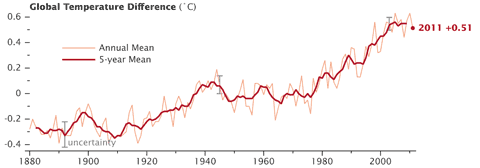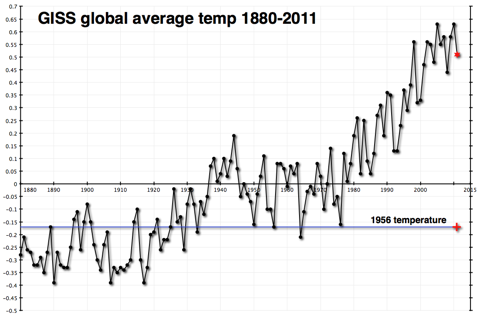
The NASA numbers are in, and 2011 was the ninth warmest year since 1880 — 0.51ºC above the 1951-80 global mean. Nine of the ten warmest years in the long term record have occurred in this century. According to the analysis released by James Hansen and his team at GISS, a combination of low solar activity and the continuing cool phase (La Niña) of the El Niño Southern Oscillation kept global temperatures down — but as this map from the Earth Observatory shows, many parts of the world still managed to experience a very warm year, especially over the Arctic and Russia:

NOAA’s overview of last year puts 2011 in eleventh place in their long term series, and confirms that the USA experienced a record 14 extreme weather events that caused more than $1 billion in damage — up two from their previous estimate.

 Ten months ago, Aussie “sceptic” John McLean
Ten months ago, Aussie “sceptic” John McLean 
 ‘Tis the
‘Tis the 